How is ‘Vintage’ the New Form of Entertainment in Television
Over the last decade our small screens have been populated with a deluge of programmes pandering to our obsession with the way we look, peddling the clothing trends we should wear, to how we should cover those imperfections presenters seemed to find so irritating. The makeover shows seemed to go hand-in-hand with the high-street’s ‘picks’ of what we should buy. However, there appears to be a new trend being offered that the television market hadn’t previously picked up on. A quick internet search will bring up numerous websites and blogs demonstrating vintage style: clothing, homewares, and lifestyles all echoing the past. Television’s fashion genre has now bought into the vintage revival; Dawn O’Porter’s Channel Four programme This Old Thing advocated vintage as a new form of individuality to escape the repetition of the high-street. Whilst This Old Thing concentrated mostly on fashion, is the rise of ‘vintage’ and ‘retro’ really just about finding a new way to emphasise our individuality when keeping up with the latest trends, by borrowing from the past?

Fashion is not the only aspect that we appear to be trying to bring back. Current culture is beginning to reflect past eras more and more, as period dramas such as Downton Abbey and Mad Men have become cult television across both sides of the Atlantic. Relatively new literary genres are now being studied and criticised, with popular authors like Sarah Waters and Margaret Atwood producing neo-Victorian novels. The 2012 BBC documentary Turn Back Time: The Family featured families spending a week at a time living the lives of their counterparts from different eras, from the 1900s through to the 1970s. The participants were presented as viewing the experiment as both a learning experience, and one of entertainment for the whole family; in their local newspaper, the Chester Chronicle one family claimed the programme was an experience “you just couldn’t pay for”.
Our infatuation with ‘vintage’ has been suggested to be connected to the recession, as people have developed a “second-hand habit” to help them try to save money, mirroring the idealised ways of the make-do-and-mend generation of the 1940s and 1950s. Modern culture has termed this ‘upcycling’. The recession may have made people more conscious of high-street spending, but the rise in vintage isn’t only to save money while continuing to pursue our high-street habit, the one drummed into us by the makeover show format. In specialist shops and even on reproduction websites, vintage clothing can be much more expensive than anything hanging up on the high-street.
Now that those eras have passed, nostalgia has set in. Critics of period dramas and neo-genre fiction have suggested the sense of reminiscence surrounding our present media and lifestyle interests is an attempt to rewrite aspects of the past. However, it appears, in the current global climate of the last few years, it seems we want to return to the past, even just for sixty minutes, for that dose of romanticism tied up in Dawn O’Porter’s enthusiasm for vintage clothing. The recession even affected the mentality of one of fashion and the publishing industry’s highest esteemed magazines, as Vogue decided to feature old, vintage alongside haute couture. The problems of modern times shown by the recession has created a desire for the sentimentality of old.
However, the use of the past in television, literature and fashion to momentarily escape todays trials is in fact ‘rewriting’ history by focusing only on an idealised version created to appease. Around the country events such as the 1940s weekend in Haworth are becoming more popular, throughout which visitors dress up in 1940s clothing, listen to the music of the era, and spend the day living in version of the 1940s. Whist this is staged as an enjoyable, historic, form of entertainment for the family, the practical tribulations of this era seem to fall by the wayside a little. The Telegraph’s Ceri Radford terms this, in reference to the BBC programme Turn Back Time: The Family, as “the elephant in the room”. This highlights the absence of realities such as “TB, air raids, or poverty” that in programmes like this one. Period drama, such as Channel Four’s The Mill, do show some of the hardships of past eras, however after one hour we are free to change the channel or switch off, and the shows heros almost always triumph in the end. By sentimentalising past eras through our clothes, television, and favourite characters we create a short escape for ourselves in period when the recession did not exist, conflict made neighbours pull together, and hardships such as the first and second world wars could be romanticised through the presence of traditional values and a lack of today’s technology. Or so things might appear during a five minute ad break.
Despite the idealisation of life in our past in recent television entertainment forms, many do portray the difficulties of the different decades of the last century. Whilst the costumes and characters remian glamorised representations of ‘vintage’ life according to what appeals to the modern day public, programmes such as The Mill do attempt to highlight the realities of life without modern advances. The show’s premise is centred around workers in a nineteeth century textiles mill, depicting some stories and characters based on records of real life accounts from similar factories of the 1800s. During the first series, first aired on Channel Four in 2013, one of the characters- a young boy, Tommy Priestly- was involved in a grisly accident that resulted in the loss of one of his hands due to it becoming caught in a piece of machinary. Accidents and injuries to workers such as this were frequent in people, including young children, were subjuct to in order to work for a living. Television entertainment has become more graphic in its inclusions of violence or gritty incidents, perhaps explaining why some ‘vintage inspired’ media included apparent harsh realities of eras such as the 1800s shown in The Mill, and programmes set within world war one or world war two, for example the portrayal of Tommy Priestly’s macabre injury and the poor living and working conditions of people in these eras. Yet most entertainment must follow the formula of romanticising past eras to provide the satisfying ending. The Mill‘s depiction of the harsh realities of Victorian textile mills quickly switched its tone to one of sentimentality and compassion, as the upper class wife of the mill’s founder, Hannah Greg, appeared to take pity on the young injured worker and took him under her own wing to help him seek a better future for himself.
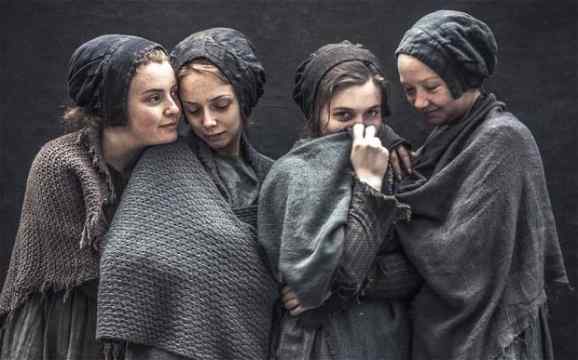
‘Vintage’ entertainment can be seen as a form of distraction from modern day problems like the recession, through an indulgence in eras we cannot experience for ourselves. Although, the depiction of difficult realities- poor working and living conditions in The Mill, the first world war in Downton Abbey, and the Great Depression and financial crisis of the 1930s in HBO’s 2011 remake of Mildred Pierce– also acts as a distraction from current problems. The idealisation within ‘vintage’ style television programmes demonstrates the way in which people of past crises coped and carried on, perhaps giving perspective, or perhaps simply offering hope to modern viewers. By comparing the lives of characters in these programmes, both in the context of the times they are set in, and the intricacies of characters’ personal lives, period televison can offer an example of how today’s viewers want to base their own lives and coping mechanisms upon in the current climate. In comparision to the times of some of period promgrammes we watch on television, to some people today’s difficulties may appear lessened. However, the accounts we see now on a screen remain on a screen; to be viewed when we choose, however many times we choose and interpreted how we choose. At the end of it, we switch off the television, the actors take off their costumes and go home.
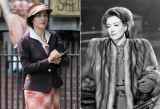
Rather than providing an untarnished glimpse of the past, our desire for ‘vintage’ as entertainment in televiosion has altered certain themes and depiction to suite a modern audiance. Whilst television is now reaching into the past in the setting, plots, and costumes of programmes as an escape from the current climate, as a modern audiance we appear to also need a dose of the explosive, often graphic, style of entertainment we have become used to today in ‘must-see’ television and ‘blockbuster’ films. The content in many shows, modern and ‘vintage’, have become more openly graphic in depictions of violence and sex; for example HBO’s Mildred Pierce remake featured numerous sex scenes between Kate Winslet’s Mildred and Guy Pearce’s Monty. The sexual content of the original novel was deemed too explicit during production of the original adaptation in 1945, and all insinuations of sexual content between any of the characters was removed from the screenplay. Howver, the 2011 version featured scenes of sexual content that many branded “gratuitous”; the graphic depiction of Mildred and Monty’s relationship at times seems to be more to excite modern viewers used to seeing similar scenes on screen, particularly in some of Winslet’s roles. Certain scenes were defended, as it was suggested the relationship between the characters during sex scenes displayed the change in the power relationships between them. However, the novel, a ‘vintage’ depiction in itself due its 1941 publication, did not feature any sexual or violent content, mostly because of the attitudes of the era. Modern audiances are becoming desensitized to sexual and violent content, which features everywhere from Luther to Boardwalk Empire, and crave more scandal to be entertained. Mildred’s wardrobe however showcased a range of believable outfits designed to reflect Mildred’s situations during the era, demonstrating one of the reasons vintage clothing has become more popular.
Dawn O’Porter’s show continues to occupy the make-over format, whilst attempting to reflect documentary style programming with relfections on fashion throughout the ages. Documentary television looking back at the past, for example the BBC’s Turn Back Time series, appears to contrast fictional entertainment programmes, which occupy both modern and ‘vintage’, attempting to keep up with the at times shocking content of modern entertainment whilst also depicting an authentic element of the past.
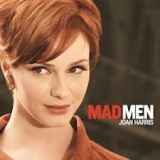
As the presenter of the programme This Old Thing, Dawn O’Porter herself claims to “love the nostalgia” and “romance” of vintage clothing more than anything else. The programme’s voiceover reiterates the importance of the “story” behind the clothing, however, we can only picture an idealised version in our minds, and cannot usually find out about the person of life the item has to tell. Vintage clothes, whether they are bought and worn by customers, including those featured on Dawn O’Porter’s show, replicated to buy, or viewed on television as the costumes of actors and characters, appear to embody this refabricated version provided for us. This Old Thing depcits specialist dressmakers attempting to recreate items of clothing brought in by the public, new or old, which can be seen as an attempt to embody the now thought of as idylic second world war mantra of make-do-and-mend. This encourages us to take on what is now perceived as the community spirit of the war, in which people grouped together to survive atrocities not present within the lives of the majority of the western world. Usually, those watching period dramas at home on the television view it as simply entertainment, maybe something they can learn a little from, even if it is fictionalised; Dawn O’Porter’s romanicised encouragments for vintage clothing does appear to show a form of awareness of the public’s desire for nostalgia, as demonstrated by her opening of each weekly episode of the six-part series. If this is the case, despite being done superficially with more of a desire for individual clothing than history, this supports the importance of fashion as an influential aspect of modern day- and past or ‘vintage- culture.
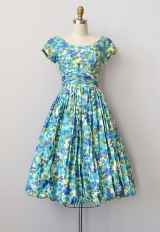
Some critics argue that entertainment and television lack historical substance, picking over details that are mistaken or blatently wrong . However, perhaps entertainment is a way to remember part of the past whilst ‘rewriting’ aspects we have worked to change in modern times: wearing vintage clothes without their past tribulations, seeing the daughters of Downtown Abbey attempt to push against gender inequality, or watching Mad Men’s Joan empower career women while exhibiting a wardrobe Dawn O’ Porter would envy. Despite some reviewers suggesting O’ Porter’s vintage programme inhabits the same ” predictable” make-over television format, it is an example of the nation’s need for at least an hour of the past.
What do you think? Leave a comment.
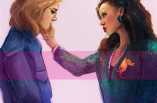
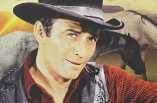
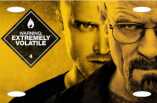
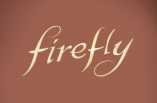
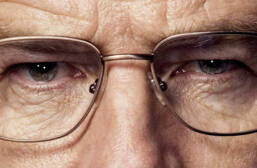
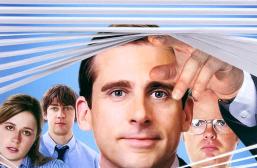
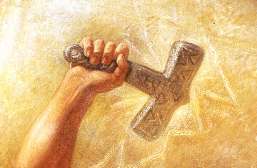
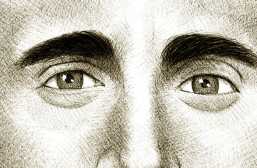
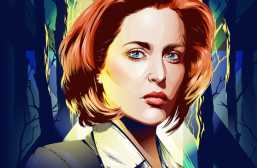
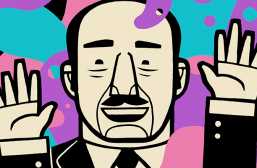
I absolutely love the fashion on Mad Men. Every time I watch it makes me wish that I lived then and could dress like that! I definitely see how it is showing up in fashion now, like how lipstick seems to becoming more and more popular.
Mad Men wardrobe is definitely attractive! Women knew how to accentuate curves then, and men always seemed to look well put-together and even sexy in suits with cigarettes and gelled hair and glasses of Scotch. Glad lipstick is more popular now, I love lipstick.
I loved The Mill, great drama and interesting that it was based on real events.
I’ve been reading the Quarry bank website and all the ‘characters’ in this were real, aside from a few of the girls.
I do wonder if they’ll be a series 2, would like there to be.
Greg family are not particularly harshly shown, as whatever autocratic behaviors they show in the series were simply of that time and place and cannot be judged by today’s standards.
The Greg family are almost portrayed as banal in their harsh attitudes. The writer tries to defend their business practices by having Robert Greg explain several times why he has so much pressure on him to turn a profit in the difficult business circumstances of that time–and with Parliament breathing down his neck with new legislation on the horizon.
But the writer rather backed off of that pretty quickly, and did not try TOO hard to make his business position sympathetic, as with modern sensibilities of viewers and a union-centric work world viewership might not continue to tune in if too much of a defense is made of his reasons for the way he runs the mill.
By that day’s standards, they are actually being portrayed pretty sympathetically, considering what went on in some other mills of the time.
I wonder if John F. had any access to today’s Greg family members or their family records, that are outside the purview of the National Trust, which is in possession of the house and mill now?
Not sure how I’d feel if this were my family being shown.
Was it good I think I missed it
I loved the ’40s film, but the newer version of Mildred Pierce captured so much more of the grittiness and realism of Cain’s novel. They serve very different purposes.
What a fun nostalgic set & costumes Mad Men has! Actually saw our ’57 kitchen in one of the shots! Being involved with mid century vintage fashion, I love seeing the clothes portrayed so well. It’s a great era with all kinds of attitude and flair. I think ’50–’65 hits just about every fashion silhouette you can find in one form or another!
I very much enjoyed The Mill. Sure it’s very gritty, depressing and grey but at least it doesn’t romanticise the past like Downton Abbey and Lark Rise to Candleford.
I think that TV is not lacking in historical substance, so much as celebrating a time that people can never live again and thus allowing readers to live in that time vicariously. In order to make the past something worth celebrating and desirable to audiences to want to live vicariously in, however, shows must glamorize the past somewhat. Beautiful vintage clothing and styles is one such way to glamorize the past, making it both real and appealing. Plus, I think people have always loved vintage to a degree, provided that it is so old their moms and their grandmas did not wear/decorate with it. Vintage is a connection to a past. All clothing is made to be attractive (at least, most clothing is…) but its attractiveness dies from generation to generation. However, younger people suddenly can begin to see the attractiveness again in clothes or furniture old enough to no longer be considered “outdated” and instead “vintage.” Then it becomes cool again, and a connection to a past they can never live, or even really understand.
I agree that these shows allow us to live vicariously through their characters. Also, the recent growth in popularity of vintage clothing is definitely, at least in part, due to such shows. As a 20-something year old woman, I have a pretty good knowledge of clothing through the eras, but oftentimes I see my younger relatives watching shows with vintage clothing and that’s their first introduction to them.
I love Mad Men. As a vintage dealer and collector, I was thrilled when this show premiered. Besides the costumes, the show is fantastic – intense.
I love the fashion and LOVE these shows.
Interesting! I think people are drawn to the ‘vintage’ fashion because it reflects a period of time they haven’t been able to experience but I don’t think this is a new phenomenon. It happened in the Renaissance when artists got their inspiration from old Greek and Roman art – even though the phenomenon today is very different. We have always looked at the past to get inspiration. It is also very linked to the sociopolitical climate of that period. For instance, the 1950s, 60s and 70s were an era of change where people wanted to innovate and break away from conventions. It was a prosperous time in terms of economy and technology, and though there was a lot of political turmoil people took this as an opportunity to express their opinions and ask for change. Today, the political and economic climate is very stifling so people look back at better days.